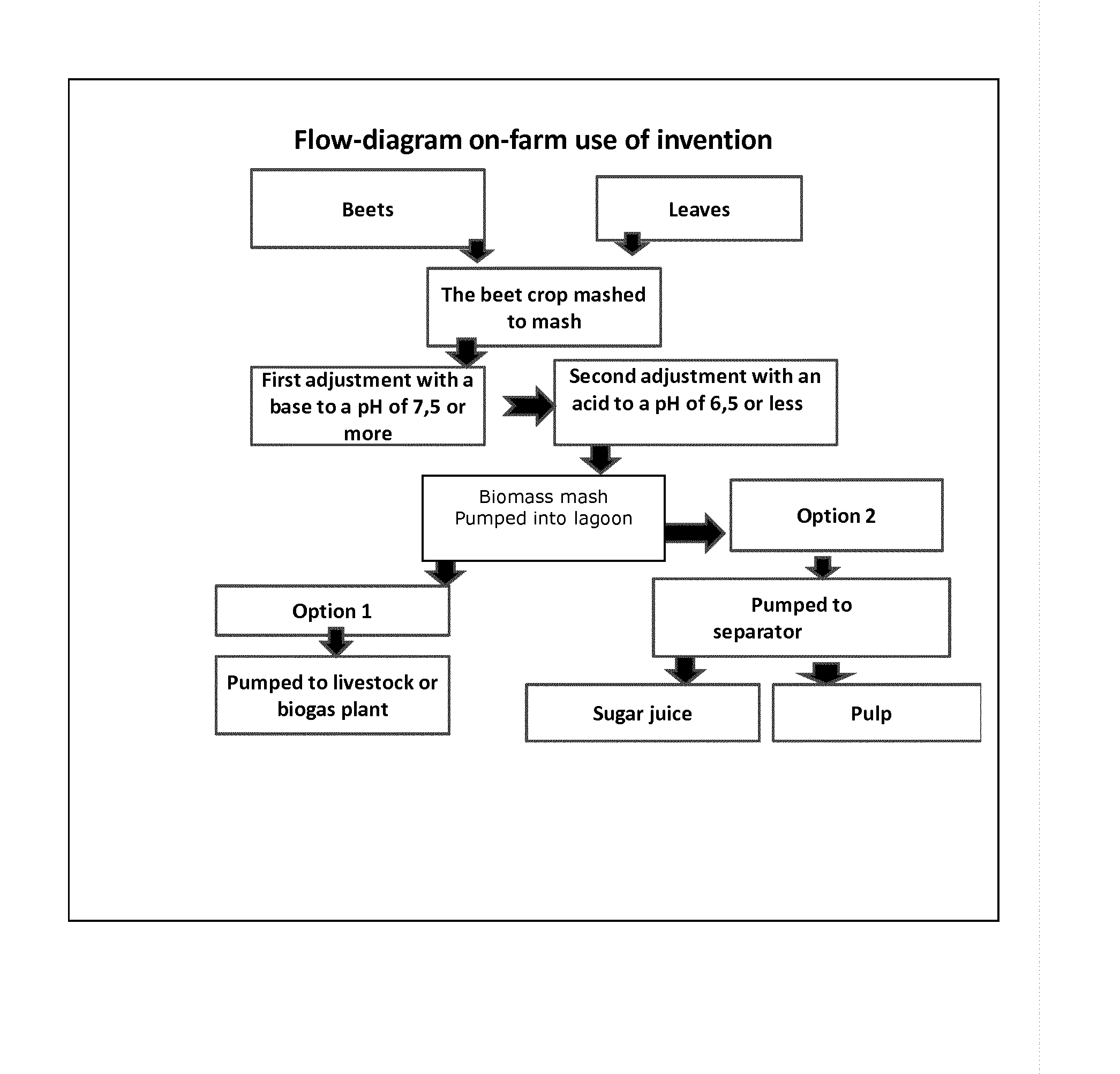Drastic Reduction of Viscosity in Biomass
a technology of biomass and viscosity reduction, which is applied in the field of preparing biomass to biomass mash, can solve the problems of affecting the homogenization and draining potential of biomass mash, affecting the production of semi-manufactured products, and affecting the adaptation of biomass mash to long-term storage, handling and use as feedstock, etc., and achieves the effects of sustaining sugar yield and sugar quality, high feeding quality, and improving the homogenization and draining potential
- Summary
- Abstract
- Description
- Claims
- Application Information
AI Technical Summary
Benefits of technology
Problems solved by technology
Method used
Image
Examples
example 1
[0170]Detailed Description of the Chemical Treatment in the Invention
[0171]Both beet or alternatively the beet crop is mashed and pulverized to a mash and subsequently mixed. NaOH respectively KOH is added to this mash to reach a pH anywhere between pH 7.5-14. After 0.15 hours or more HNO3 is added to reach a pH of choice, upon which the substrate is pumped into a lagoon for storage and subsequent use, as illustrated in FIG. 1.
[0172]In more detail, the following example, from numerous possibilities, can serve. On 1 kg of the mashed beet or beet crop, a 0.4 kg NaOH solution can be added to arrive at a pH of 7 or more. After 0.15 hours or more at this pH, a 0.4 kg HNO3 solution is added to arrive at a pH of choice.
example 2
[0173]Two Scenarios to Apply the Invention in Practice at Daily Temperatures:
[0174]The invention centers on the use of the beet crop even though other biomasses may be used. The beet crop may be chosen as it provides the highest yields in dry matter and sucrose yield per hectare, by a top rank in environmental sustainability, in the cool summers of the colder climates and in the cool winters of the warmer climates.
[0175]On top of that, the beet crop, at 3% lignin and 9.5% of cellulose of the dry matter, is low in ligno-cellulose, which is of critical importance in feeding high performing livestock and biogas plants and a prerequisite for a low-input bio-energy system for whatever purpose as table 8 suggests.
[0176]So irrespective of the invention is limited to the production of a feedstock for feeding livestock or biogas plants or to produce sugar juice and pulp, the beet crop may be used.
[0177]As illustrated in FIG. 1, the harvest of the beet crop leads to two products, beets and be...
PUM
| Property | Measurement | Unit |
|---|---|---|
| Temperature | aaaaa | aaaaa |
| Temperature | aaaaa | aaaaa |
| Fraction | aaaaa | aaaaa |
Abstract
Description
Claims
Application Information
 Login to View More
Login to View More - R&D
- Intellectual Property
- Life Sciences
- Materials
- Tech Scout
- Unparalleled Data Quality
- Higher Quality Content
- 60% Fewer Hallucinations
Browse by: Latest US Patents, China's latest patents, Technical Efficacy Thesaurus, Application Domain, Technology Topic, Popular Technical Reports.
© 2025 PatSnap. All rights reserved.Legal|Privacy policy|Modern Slavery Act Transparency Statement|Sitemap|About US| Contact US: help@patsnap.com

